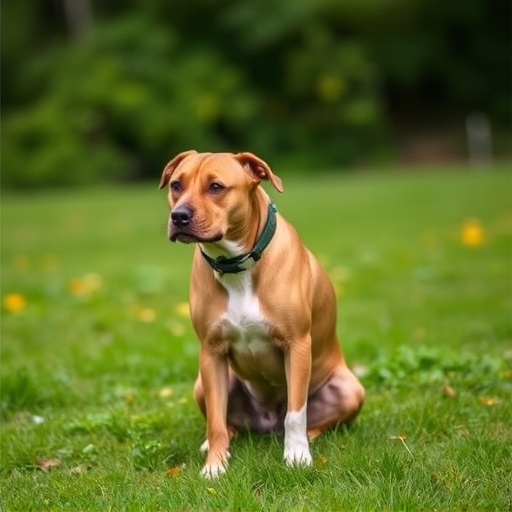Airline Rules and local laws govern the legal use of Pet Defense Spray for pet safety during travel. Comply with regulations, choose approved products, and follow instructions to avoid negative impacts. Prefer non-lethal, natural sprays like capsaicin over harmful chemicals, ensuring a safe, responsible pet travel experience that adheres to Airline Rules.
Animal control sprays have emerged as a controversial yet effective tool for managing aggressive animals. This comprehensive guide explores the legal framework surrounding pet defense sprays, with a specific focus on airline rules. We’ll delve into the science behind these products, their active ingredients, and when their use is permissible by law. Additionally, safety precautions and non-lethal alternatives are discussed to provide a balanced perspective on this hotly debated topic.
- Legal Framework: Airline Rules and Pet Defense Spray
- Understanding Pet Defense Sprays: Active Ingredients
- When Is It Legal to Use Pet Defense Spray?
- Safety Precautions for Using Animal Control Sprays
- Alternatives to Chemical Sprays: Non-Lethal Methods
Legal Framework: Airline Rules and Pet Defense Spray
The legal framework surrounding animal control sprays, particularly those used for pet defense, varies across regions and jurisdictions. In many countries, these products are regulated to ensure their safety and effectiveness while mitigating potential risks. Airline rules play a significant role in this context, as travel with pets often involves strict guidelines on the type and quantity of defense sprays allowed on board.
Airline regulations typically prohibit the use of offensive or harmful chemicals in pet defense sprays, focusing instead on those that deter animals without causing excessive harm. Pet owners must ensure that any spray they carry adheres to these rules, which are designed to maintain a safe travel environment for all passengers and their companion animals. Understanding both local laws and airline policies is crucial before considering the legal use of pet defense sprays.
Understanding Pet Defense Sprays: Active Ingredients
Pet defense sprays, also known as pepper spray for pets, are designed to deter potential threats without causing serious harm. Understanding the active ingredients in these sprays is crucial for responsible use and ensuring compliance with airline rules regarding pet travel. Common active components include capsaicin, a compound derived from chili peppers, and various pepper-based extracts. These substances irritate the eyes, nose, and respiratory system of an attacker, temporarily disabling them and giving the pet an opportunity to escape.
Airline Rules often have specific guidelines for pet defense sprays, focusing on safety and containment. They typically require the use of approved products that meet certain standards, ensuring minimal risk to passengers, crew, and other animals. Users should carefully read and follow the instructions provided with the spray, as improper usage can lead to unwanted consequences. The active ingredients must be chosen based on their effectiveness in deterring threats while adhering to legal and safety protocols.
When Is It Legal to Use Pet Defense Spray?
Using pet defense spray, also known as pepper spray for pets, is a legal and effective method to protect yourself and your loved ones from aggressive animals. The legality of such sprays varies by region, but in many places, it’s permitted under specific circumstances. For instance, if you’re traveling with your pet on an airline, some countries and airlines have rules allowing the use of pet defense spray for dogs and cats during transportation if they display signs of distress or aggression that could pose a danger to other passengers or crew members.
Always check local and national laws as well as airline regulations before carrying pet defense spray. Ensure you understand when it’s legal to use, how much is permitted, and any specific instructions for storage and application. Safety and responsible usage are paramount; follow the manufacturer’s guidelines to guarantee its effectiveness while minimizing risks to both your pet and others around you.
Safety Precautions for Using Animal Control Sprays
Using animal control sprays, especially those designed for pet defense, requires careful consideration and adherence to safety precautions. Firstly, always familiarize yourself with local laws and regulations regarding the use of such products, as airline rules can vary significantly across regions. Ensure you understand the legal restrictions and have the necessary permits if required.
When applying any spray, prioritize safety by wearing protective gear, including gloves, eye protection, and a face mask to avoid inhalation. Keep these sprays out of reach of children and pets, and store them in secure, labeled containers. Follow the manufacturer’s instructions precisely regarding usage, aiming for specific targets while avoiding unnecessary exposure to people or sensitive areas. Regularly check expiration dates on products to guarantee their effectiveness and safety.
Alternatives to Chemical Sprays: Non-Lethal Methods
Many people are turning away from traditional chemical sprays for animal control, opting instead for non-lethal methods that prioritize safety and well-being. One popular alternative is the use of pet defense spray, designed specifically to deter aggressive animals without causing harm. These sprays typically contain natural ingredients like capsaicin, the compound responsible for chili pepper’s heat, which can effectively stop an attack without leaving lasting damage.
Additionally, there are non-chemical options available, such as noise makers and visual deterrents. Air gun rules, for instance, offer a safe way to scare off unwanted wildlife, while ultrasonic devices emit high-frequency sounds that are unpleasant to animals but harmless to humans. These innovative solutions not only respect animal life but also align with airline rules regarding pet defense items, making them convenient choices for both urban dwellers and those traveling with pets.
The legal framework surrounding airline rules and pet defense spray usage underscores the importance of understanding both local regulations and the specific active ingredients in these products. Knowing when it’s legal to employ pet defense spray is crucial, especially for travelers with pets. Safety precautions must be paramount, as these sprays can have adverse effects if mishandled. Exploring non-lethal alternatives to chemical sprays further enriches our toolkit for managing animal encounters, promoting both safety and humane practices.
